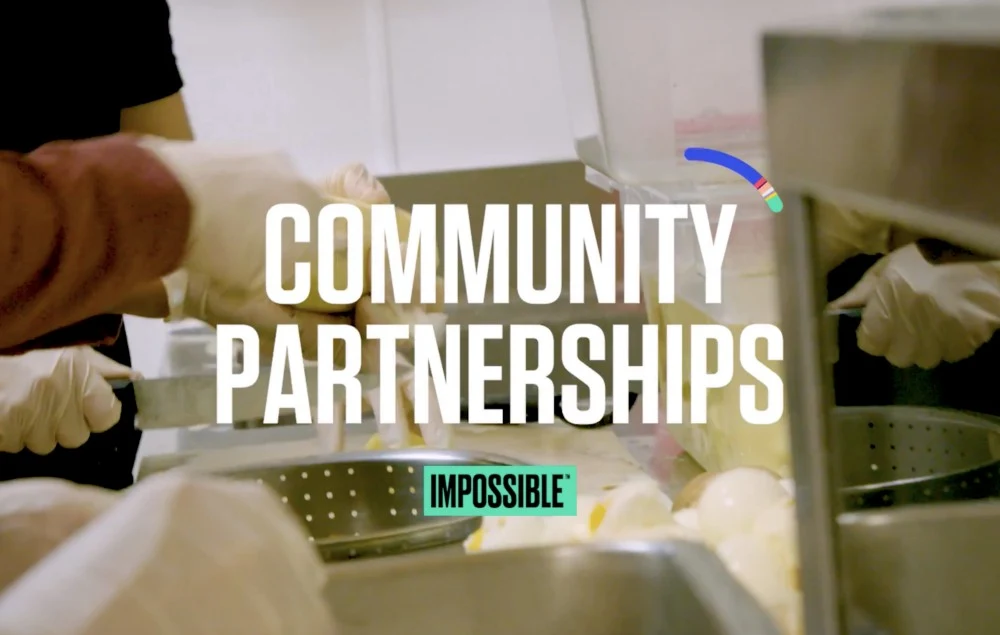Filling the Protein Gap
By Jessica Appelgren, IF VP of Communication

With the launch of our first blog post in January, we shared the mission that motivates us(opens in a new tab) and our vision for the future. tl;dr: Impossible Foods’ ultimate goal is to create a truly sustainable global food system that not only feeds but nourishes our growing population, replenishes Earth’s natural resources, and rebuilds ecosystems for biodiversity and wildlife. Our eyes are fixed on 2035: the year we are working to end the institutionalized use of animals in our food system.
It’s 2018: we have a long way to go. While we’ve launched the Impossible Burger (our first product) in over 500 restaurants and chains across the US(opens in a new tab) to date and are bringing the burger overseas this year(opens in a new tab), it’s no mystery to anyone that it’s far from accessible to the mainstream consumer — much less, the world’s food insecure. We’re scaling our supply chain and manufacturing operations exponentially over the next several years to change this, but at the same time, are seeking out opportunities to put our mission into action in the ways that we can today, starting with our own backyard.
The San Francisco Bay Area is home to some of the most impactful local and national organizations that share our mission to address food insecurity. Alameda County Community Food Bank (ACCFB)(opens in a new tab) and Second Harvest Food Bank (SHFB)(opens in a new tab), two orgs at the forefront of hunger-relief efforts in both the Bay and the country, serve tens of millions of meals every month. Both work closely with Feeding America(opens in a new tab) — a nationwide network of over 200 food banks and 60,000 pantries and meal programs — which secures and distributes 4 billion meals each year throughout the United States, serving 1 in 7 Americans.
How it works:
Feeding America rescues surplus food from three areas: farms, manufacturers and consumer-facing businesses.
Feeding America distributes food to a nationwide network of food banks, food pantries and meal programs.
Food banks receive additional donations from their community grocery stores, farms, and individual contributors.
Food banks sort through donations based on quality and condition, and re-distribute within their own networks of food pantries, programs, and agencies, according to each location’s needs.
These locations prepare hot meals and produce selections for regular and drop-in clients — no questions asked.
ACCFB works with over 200 food pantries, soup kitchens, community organizations, and direct-distribution programs to feed 1 in 5 Alameda County residents. SHFB, one of the largest food banks in the US, works with its network of 300 nonprofit partners at over 900 locations to distribute fresh food, distributing more produce than nearly any other food bank in the country. Both ACCFB and SHFB are known largely for their effectiveness as food providers; however, their work, like most food banks, includes much more. Both organizations have policy and advocacy arms, food harvesting and waste management teams, and educational programs that all exist to serve their client community.
In our search for high-impact, inspirational community partners, it became immediately clear that these organizations were exactly what we were looking for. According to ACCFB, high-quality sources of protein are not only the most desired food items by clients and agencies; they are also the least frequently donated and most expensive to acquire. One quarter-pound Impossible Burger, in addition to its environmental benefits, has the same amount of protein and bioavailable iron as one quarter-pound ground beef burger from cows. Protein — plant-based, sustainable, complete, and made to feed our planet and global population — is therefore one of the main ways Impossible Foods can contribute to our community.
Starting this week, the Impossible Burger will be served regularly at meal centers in Alameda, Santa Clara and San Mateo counties — the result of our ongoing partnerships with ACCFB and SHFB to help fill the protein gap. With this program, we are ensuring that these organizations, starting with the locations near our own Redwood City headquarters and Oakland manufacturing facility, have a predictable supply of protein that is drastically better than meat from animals. Choice is a privilege, and we are making a commitment to work closely with the Bay Area’s food providers to ensure that everyone can make healthier and more sustainable choices.
Through this partnership, we’ve had the honor of learning from and getting to know the teams at ACCFB and SHFB. Thank you, both, and thank you, Chris Kronner (KronnerBurger(opens in a new tab), Oakland) and Rocco Scordella (Vina Enoteca(opens in a new tab), Palo Alto) for training our volunteers and serving burgers alongside us. It’s been a team effort to get this program launched.
Because a mission isn’t accomplished in a day, it’s good that every day on this mission is its own reward.
Check out locations serving the Impossible Burger(opens in a new tab) and our FAQs(opens in a new tab) for more info. More questions? Contact us at [email protected](opens in a new tab).
Jessica is the Vice President of Communications and leads Community Outreach at Impossible Foods.